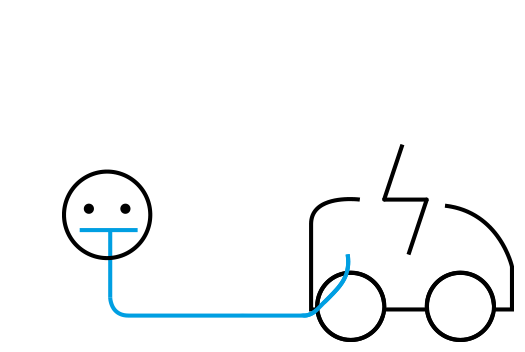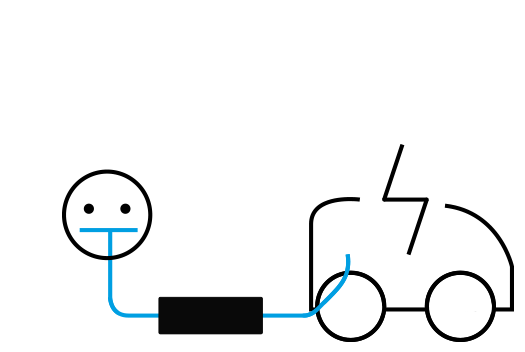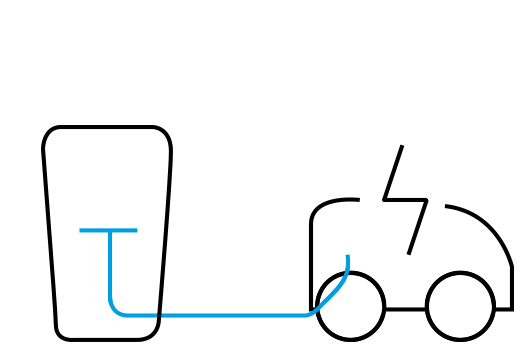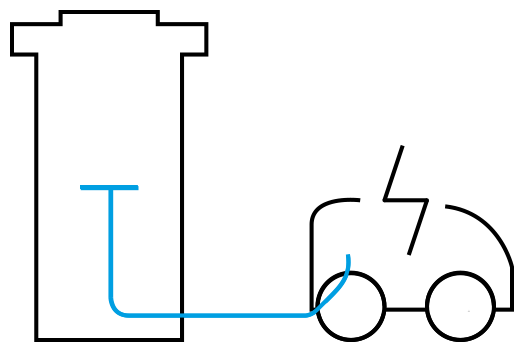
LOADING TYPES AND MODES
There are five types of recharging according to the speed at which it takes to recharge, i.e. how long it takes to recharge the batteries. This time depends directly on the available power.
| Type of recharge | Type of current | Power | Tiempo de carga |
| SLOW | single-phase | 3,4 kW | 16 horas |
| CONVENTION | three-phase | between 7 and 15 kW | 10 horas |
| SEMI-FAST | continuous/alternate | between 15 and 40 kW | 4-6 horas |
| FAST | continuous/alternate three-phase | between 40 and 100kW | 1-2 horas |
| ULTRA-FAST | continuous/alternate three-phase | above 100kW | 30 min |
The charging modes of electric vehicles define certain characteristics on the power and control of the recharging facilities.
Mode1

Direct connection of the vehicle to the network.
- > Non-exclusive power outlet.
- > Single cable.
- > Risk of overheating
Mode2

Direct connection of the vehicle to the network.
- > Exclusive power socket.
- > Cable with communication device and recharging supervision.
- > Limited loading speed.
Mode3

Direct connection of the vehicle to the network.
- > Exclusive power socket with load monitoring.
- > Cable with communication device and recharging supervision.
Mode4

Indirect connection of the vehicle to the mains via the DC converter.
- > External direct current socket with load monitoring.
- > Cable with communication device and recharging supervision.
- Intelligent charger for indoor environments: from 2.3 kW to 43 kW power.
- Intelligent single-phase outdoor charger: from 3.7 kW to 7.4 kW.
- Intelligent charger for three-phase outdoor environments: 11 kW or 22 kW.
| Environment | Network Type | Available powers | Types of cargo | Charging modes |
| Indoor Environment | Single-phase | 3,7 kW / 7,4 kW | Semi-quick / Fast | Mode 1 / Mode 2 |
| Indoor Environment | Three-phase | 11 kW / 22 kW / 43 kW | Semi-quick / Fast | Mode 3 |
| Outdoor Environment | Single-phase | 3,7 kW / 7,4 kW | SSemi-quick / Fast | Mode 1 / Mode 2 |
| Outdoor Environment | Three-phase | 11 kW / 22 kW | Semi-quick / Fast | Mode 3 |

 ES
ES PT
PT